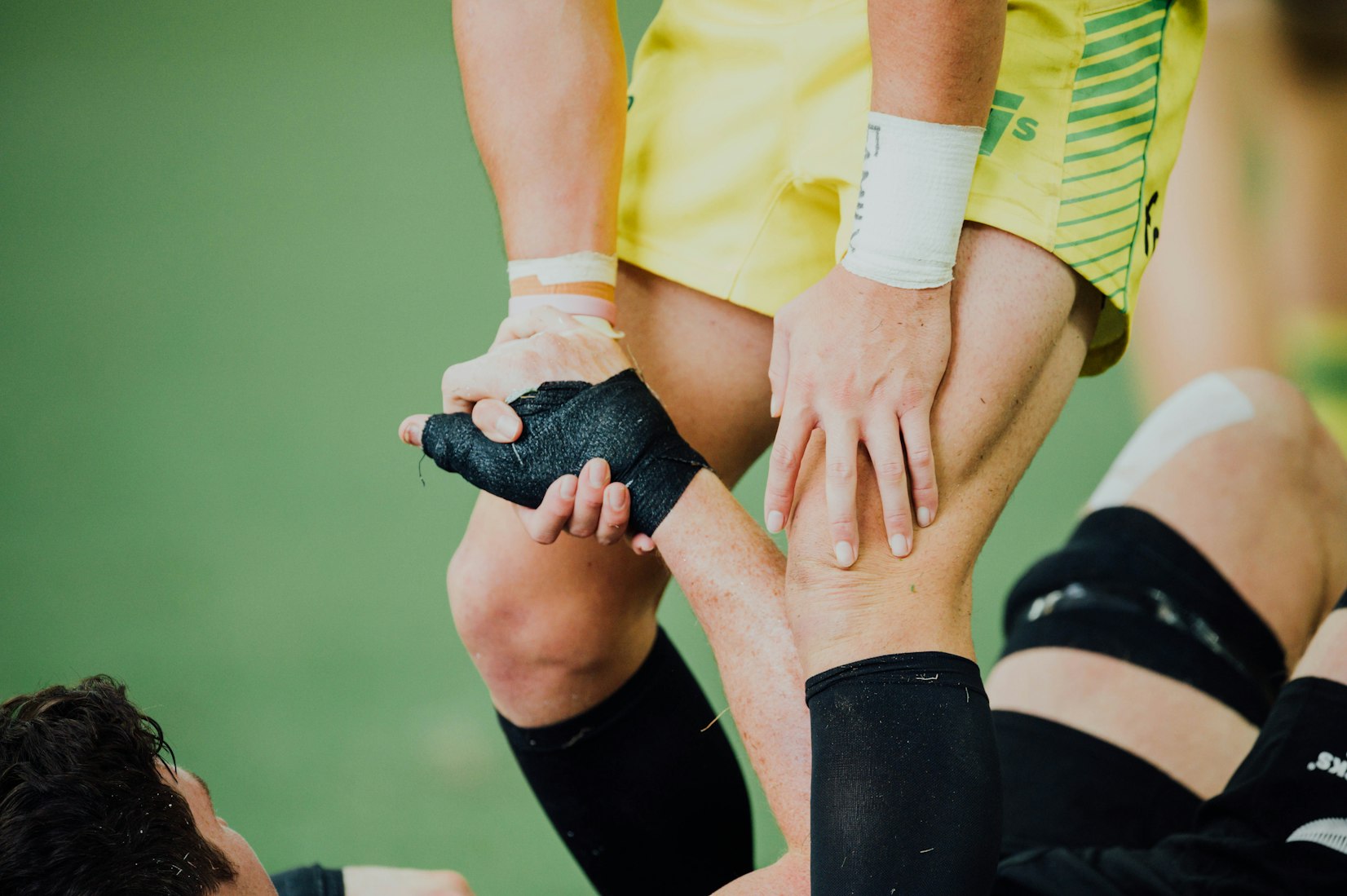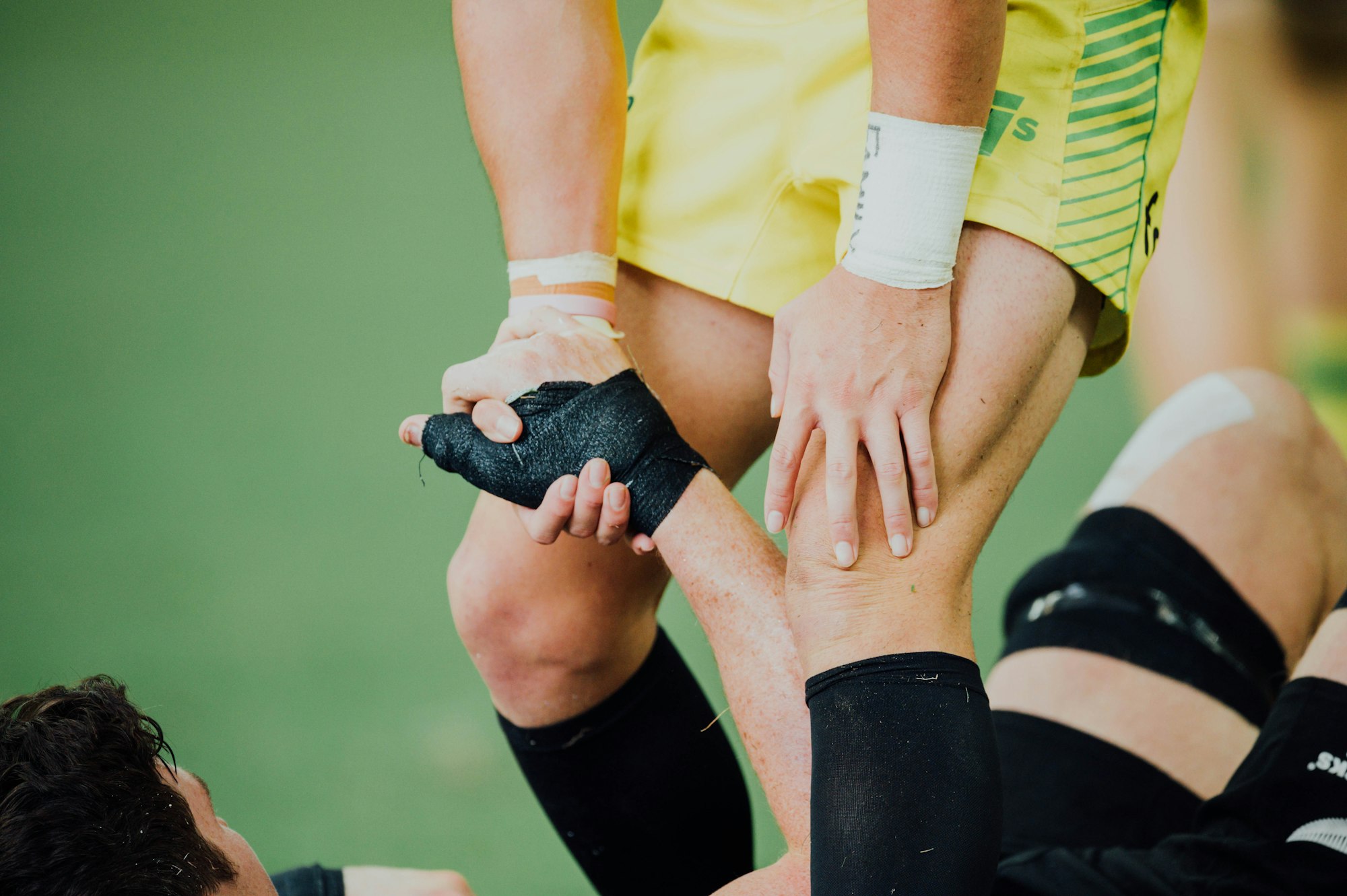The word ARTHRITIS is in the word osteoARTHRITIS! OsteoarthrITIS and osteoarthrOSIS sound extremely similar! While both effect your joints, they are not the same thing! Continue reading to finally understand the differences between osteoarthrITIS and osteoarthrOSIS!

Image by Agustin Fernandez via Unsplash.com
You may be asking yourself... What is the difference between arthritis and osteoARTHRITIS? What is the difference between osteoarthrITIS and osteoarthrOSIS? What is "osteo"? Let me help solve all your itis, osis, and osteo problems!
Arthritis is a general term for many types of diseases affecting a persons’ joints or tissues. Think of arthritis as a big umbrella that has a lot of other diseases under this umbrella. Osteoarthritis is the most common type of arthritis. Osteoarthritis is under the umbrella of arthritis!
Osteo is just the Greek word for bone![1]
The main difference between osteoarthrITIS and osteoarthrOSIS is:
- OsteoarthrITIS is an inflammatory (swelling) disease due to increased pressure on the joints. It is typically developed due to controllable non-biological factors. Non-Biological factors are factors that you have control over such as weight, not relating to your biology. Therefore osteoarthrITIS is preventable!
- OsteoarthrOSIS is a non-inflammatory (non-swelling) disease due to biological factors. Biological factors are factors that you do not have control over such as genetic makeup, relating to your biology. Unlike osteoarthrITIS, osteoarthrOSIS is non-preventable! Remember, you may not be able to prevent osteoarthrOSIS, but you can manage it!
The main difference between an inflammatory diseases and non-inflammatory diseases is:
- Inflammatory diseases cause swelling resulting in redness, pain, and reduced function.
- Non-Inflammatory diseases do not possess swelling features.
Arthritis

Image by CHUTTERSNAP via Unsplash.com
What is arthritis? Arthritis is a generalized term for conditions affecting the joints or tissues around a joint.[2] Interesting fact… there are more than 100 types of arthritis, including osteoarthritis, rheumatoid arthritis, and juvenile arthritis.[2] Arthritis can be a painful and disabling chronic disease.[3]
Did you know… all types of arthritis are different? Each type of arthritis is associated with different symptoms, risks, and treatments. These are some of the defining features of different types of arthritis:
- Rheumatoid Arthritis: inflammatory disease where immune system mistakenly attacks healthy cells, causing long-lasting inflammation.[2]
- Juvenile Arthritis: (also known as childhood arthritis) found only in children, causing permanent physical damage to joints. [2]
- Psoriatic Arthritis: type of arthritis that affects individuals who have psoriasis (skin disorder)[2]
- Septic Arthritis: (also known as bacterial arthritis) develops due to blood infection[2]
Do I have arthritis? Symptoms of arthritis can include:
Symptoms of arthritis can develop at once or over a prolonged period. During this time symptoms may be there at all times or only present at times. [2]
Am I at risk of developing arthritis? Risks of arthritis can include:
- Weight: People who are overweight or obese are at greater risk for developing osteoarthrITIS due to the increased stress placed on joints, specifically weight bearing joints such as the hips or knees.[2]
- Infection: Certain bacteria and viruses can infect joints, causing the development of specific types of arthritis, such as septic (or bacterial) arthritis.[2]
- Joint Injuries: Injury or overuse of joints due to repetitive stress and contribute to the development of osteoarthrITIS over time.[2]
What should I do if I have arthritis? Treatment of arthritis includes:
- Weight: Maintain a healthy weight through healthy eating habits and physical activity, try to engage in physical activities that are “joint-friendly” such as walking and water aerobics.[2]
- Response: If you notice your joints are swollen, warm or red, go see a doctor right away.[2]
- Joint Injuries: Protect joints through safe physical activity practice, know your body’s limitations, and try to modify activities to apply less stress to your joints.[2]
OsteoarthrITIS

Image by Annie Spratt via Unsplash.com
What is osteoarthritis? Osteoarthritis is the most common form of arthritis.[2] It is an inflammatory degenerative joint disease.[1] It is most common in the hands, hips, and knees. Osteoarthritis starts when the cartilage within a joint begins to break down. Cartilage is connective tissue within your body, connecting your bones together. This causes the underlying bone to become exposed and change. Changes progressively get worse over time.[4]
Do I have osteoarthritis? Symptoms of osteoarthritis can include:
These symptoms develop over time, becoming worse with time. In severe cases, these symptoms go on to cause decreased function and disability among people affected.[4]
Am I at risk of developing osteoarthritis? Risks of osteoarthritis can include:
- Weight: Osteoarthritis is a type of arthritis, similar to risks associated with arthritis, development of osteoarthritis is observed in people who are overweight or obese, due to the increased stress placed on joints.[4]
- Joint Injuries: Similar to weight, joint injuries are an associated risk with arthritis and osteoarthritis.[4]
What should I do if I have osteoarthritis? Treatment of osteoarthritis includes:
- Weight:Engage in safe physical activity to decrease weight, decreasing the stress placed on joints throughout daily function.[4]
- Physical Activity:Safely increase physical activity to strengthen supportive muscles, decreasing the load placed on joints throughout daily function. Recommended physical activities include walking, biking, and swimming. Performing physical activity in water is great because it allows smooth movement and applies low resistance.[4]
- Supportive Devices:Use a cane or crutch to decrease the stress applied to joints while in an upright position. Supportive devices serve as a short term solution, whereas appropriate physical activity and exercises are a long term solution![4]
OsteoarthrOSIS

Image by Anna Auza via Unsplash.com
What is osteoarthrosis? Osteoarthrosis is a degenerative joint disease, like osteoarthritis. However, osteoarthrOSIS is a non-inflammatory disease, unlike osteoarthrITIS. The process begins at an older age when cartilage begins to deteriorate, leaving people with bone-to-bone contact within the joints.[5]
Do I have osteoarthrosis? Symptoms of osteoarthrosis include:
Similar to osteoarthrITIS, these symptoms progressively develop over time, getting worse over time. A notable difference between the symptoms of osteoarthrITIS and osteoarthrOSIS is, osteoarthrITIS is an inflammatory disease, whereas osteoarthrOSIS is a non-inflammatory disease.
Am I at risk of developing osteoarthrosis? Risks of osteoarthrosis include:
- Age: Osteoarthrosis is a disease associated with the aging process, cartilage function and ability decreases over time, resulting in mechanical issues.[6]
- Weight:Weight: In general decreasing the weight of a person decreases the stress they place on their joints, however, osteoarthrosis is not more commonly observed in any specific weight-bearing joints.[6]
- Genetics: Osteoarthrosis is a genetic disease.[6]
What should I do if I have osteoarthrosis? Treatment of osteoarthrosis includes:
- Weight: Associated with weight loss is a decrease in the overall stress people place on joints.[6]
- Physical Activity: Strengthen muscles surrounding the affected joint, increasing the support that joint has. Recommended physical activities include lifting weights at a low load and use of a stationary bike. Also, walking with bouts of breaks is a great way to strengthen muscles in a safe way.[6]
- Supportive Devices: The use of devices such as a cane or a crutch can help decrease the stress a person places on their joints.[6] Supportive devices serve as a short term solution, whereas specific physical activity and exercises are a long term solution!
- Rest: Sitting at rest can decrease the stress a person places on their joints while they are resting.[6] Although long term rest is never a solution for osteoarthrosis.
Check out Curovate! It is a physical therapy app that has progressive exercises for the knee and hip. The app provides you with video-guided exercises, reminders, and has a feature that allows you to measure your joint range of motion for your knee or hip. Try the app today by clicking the link below!
If you need further customized assistance during your surgery or injury recovery check out our Virtual Physical Therapy page to book your 1-on-1 video session with a physical therapist.
 |
 |
|---|







